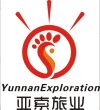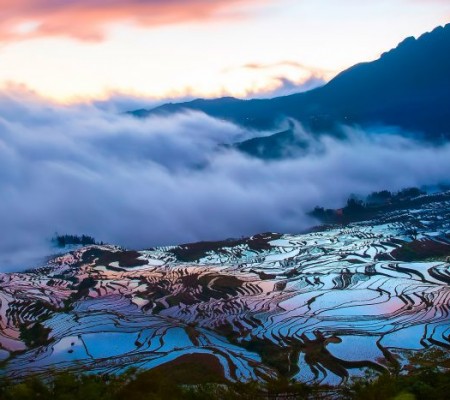
Kena Village of Tacheng Town in Weixi County, Diqing
Kena Village (柯那村) is located in Tacheng Town (塔城镇), Weixi Lisu Autonomous County (维西傈僳族自治县), Diqing Tibetan Autonomous Prefecture (迪庆藏族自治州), Yunnan Province (云南省), situated in the vertical valley zone of the Hengduan Mountains (横断山脉) and the core area of the World Natural Heritage site “Three Parallel Rivers of Yunnan” (三江并流).
Tacheng Town is bordered by Wujing Township (五境乡) and Shangjiang Township (上江乡) of Shangri-La City (香格里拉市) to the east across the Jinsha River (金沙江), by Tacheng Township (塔城乡) of Yulong County (玉龙县) to the southeast, Yongchun Township (永春乡) to the south, Kangpu Township (康普乡), Baijixun Township (白济汛乡), and Pantian’ge Township (攀天阁乡) to the west and southwest, and by Tuoding Township (拖顶乡) and Xiaruo Township (霞若乡) of Deqin County (德钦县) to the north.
Kena Village is 7 kilometers from the Tacheng Town government seat.
Cultural and Historical Background
Kena (柯那) is a Tibetan name meaning “large whirlpool pond.” Before the founding of the People’s Republic of China, it was part of the Kena administrative unit under Zhongpu Township (宗普乡).
It was designated as Kena Village in 1950, renamed Kena Township in 1954, became the Kena Management Area of Tacheng Commune in 1958, reverted to Kena Township in 1962, and was renamed Kena Brigade in 1969. In 1984, the name Kena Township was reinstated, later changed to Kena Village Community under Tacheng Township in 1988. In 2001, it was restructured into Kena Villagers’ Committee, which remains in use today.
In September 2020, Kena Village was selected as part of the first batch of provincial-level Forest Villages in Yunnan Province.
Folk Customs
Kena Village and its surrounding areas are inhabited by various ethnic minorities, including Tibetans (藏族), Naxi (纳西族), and Lisu (傈僳族) peoples. These cultures have blended to form unique local folk traditions.
Traditional performances such as the Reba Dance (热巴舞) and the Lisu dance “Achimu Gua” (阿尺木刮) are still practiced.
Cultural heritage sites near the village include the Cave of Master Bodhidharma (达摩祖师洞) and the Tongle Lisu Residential Architecture Complex (同乐傈僳族民居建筑群).
Weather and Best Visiting Time
Tacheng Town lies in a low-latitude plateau and enjoys a subtropical to temperate monsoon mountain climate, characterized by significant altitudinal climate variation.
The annual average temperature is around 15°C, with about 850 mm of annual rainfall.
The best times to visit are during spring and autumn, when the climate is pleasant and the scenery at its most beautiful.
Recommended Attractions
Traditional Houses in Kena Village (柯那村)
Experience the unique architecture and cultural charm of ethnic Tibetan-style homes.
Lapu River (腊普河)
A scenic tributary of the Jinsha River (金沙江) flowing through the heart of Tacheng Town.
Yunnan Snub-nosed Monkey National Park (滇金丝猴国家公园)
Tacheng Town is a crucial habitat for the endangered Yunnan snub-nosed monkey (滇金丝猴), and visitors can observe this rare species up close.
Suggested Duration for Each Destination
- Kena Village (柯那村): 1 day to immerse in local folk culture.
- Lapu River (腊普河): Half a day for scenic exploration.
- Yunnan Snub-nosed Monkey National Park (滇金丝猴国家公园): 1 day to observe rare wildlife.
Transportation
By Car
From Weixi County (维西县), drive via main roads to Tacheng Town (塔城镇), then on to Kena Village (柯那村). The total distance is about 80 kilometers.
By Public Transport
Take a bus from the Weixi County Bus Station to Tacheng Town and transfer to local transport to reach Kena Village.
Local Cuisine
- Weixi Hundred Flowers Honey (维西百花蜜): A local specialty known for its rich and smooth flavor.
- Bise Meat (琵瑟肉): A distinctive Lisu (傈僳族) dish with a unique taste.
- Clear Soup Fish (清汤鱼): Made from fresh fish from the Lancang River (澜沧江), offering a delicious and light flavor.
Shopping
- Ethnic Handicrafts: Such as wooden bowls and tsampa boxes (糌粑盒), full of cultural charm.
- Weixi Walnuts (维西核桃): A high-quality local specialty, perfect as souvenirs.
Accommodation
Tibetan-style guesthouses are available in and around Kena Village, offering comfortable stays and an opportunity to experience authentic Tibetan hospitality.
Travel Tips
- Respect Local Customs: When visiting, please honor the religious beliefs and traditions of local ethnic communities.
- Protect the Environment: Kena Village maintains a pristine ecological environment—please travel responsibly.
- Travel Safety: The roads leading to the village are winding and rugged—caution is advised when driving.
Itinerary Suggestion
- Day 1: Arrive in Kena Village, explore traditional houses, enjoy ethnic culture, and taste local cuisine.
- Day 2: Visit Lapu River in the morning for scenic views, then head to Yunnan Snub-nosed Monkey National Park in the afternoon for wildlife observation.
- Day 3: Return to Weixi County or continue on to other destinations.
Kena Village (柯那村) is a culturally rich and ethnically diverse destination ideal for travelers interested in folk traditions and natural beauty. Here, you’ll experience the warmth of the local people and the unique charm of ancient cultures.
May your journey to Kena Village be filled with unforgettable moments and meaningful experiences.
For Chinese version please go to:
http://www.sohu.com/a/156295348_248772

 7 Days GolfingTour
7 Days GolfingTour
 8 Days Group Tour
8 Days Group Tour
 8 Days Yunnan Tour
8 Days Yunnan Tour
 7 Days Shangri La Hiking
7 Days Shangri La Hiking
 11 Days Yunnan Tour
11 Days Yunnan Tour
 6 Days Yuanyang Terraces
6 Days Yuanyang Terraces
 11 Days Yunnan Tour
11 Days Yunnan Tour
 8 Days South Yunnan
8 Days South Yunnan
 7 Days Tea Tour
7 Days Tea Tour
 8 Days Muslim Tour
8 Days Muslim Tour
 12 Days Self-Driving
12 Days Self-Driving
 4 Days Haba Climbing
4 Days Haba Climbing
 Tiger Leaping Gorge
Tiger Leaping Gorge
 Stone Forest
Stone Forest
 Yunnan-Tibet
Yunnan-Tibet
 Hani Rice Terraces
Hani Rice Terraces
 Kunming
Kunming
 Lijiang
Lijiang
 Shangri-la
Shangri-la
 Dali
Dali
 XishuangBanna
XishuangBanna
 Honghe
Honghe
 Kunming
Kunming
 Lijiang
Lijiang
 Shangri-la
Shangri-la
 Yuanyang Rice Terraces
Yuanyang Rice Terraces
 Nujiang
Nujiang
 XishuangBanna
XishuangBanna
 Spring City Golf
Spring City Golf
 Snow Mountain Golf
Snow Mountain Golf
 Stone Mountain Golf
Stone Mountain Golf




